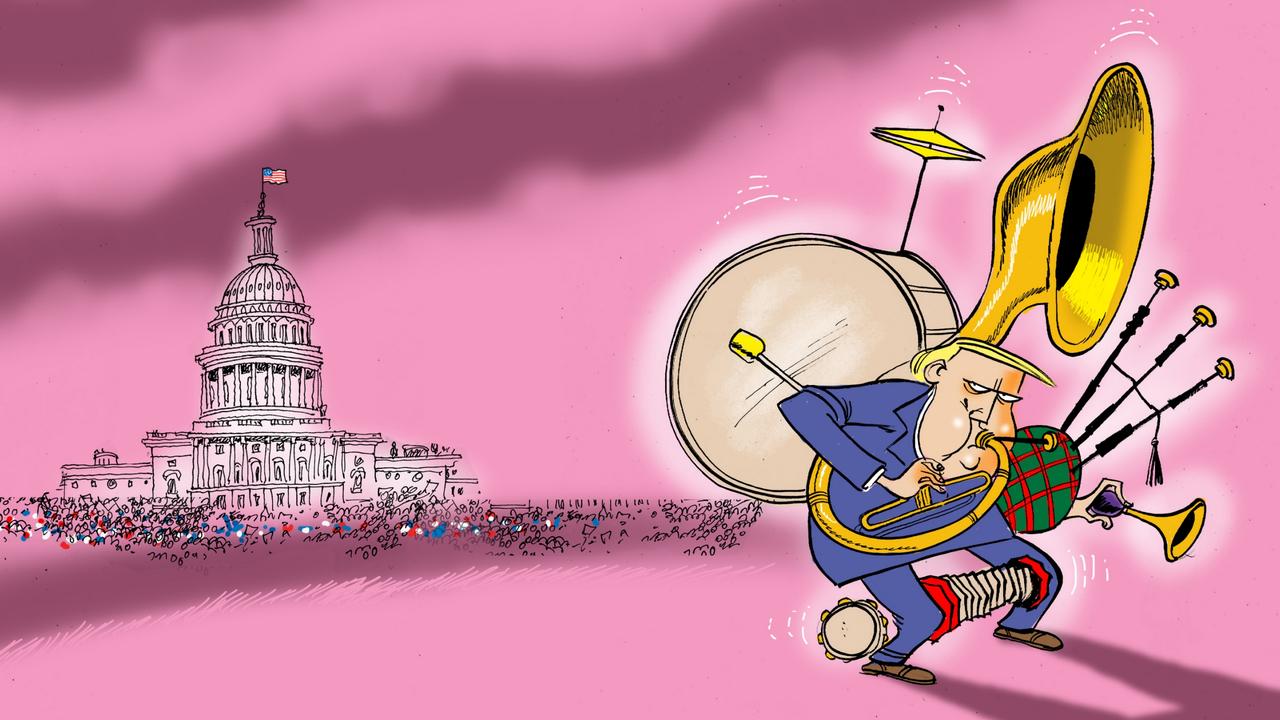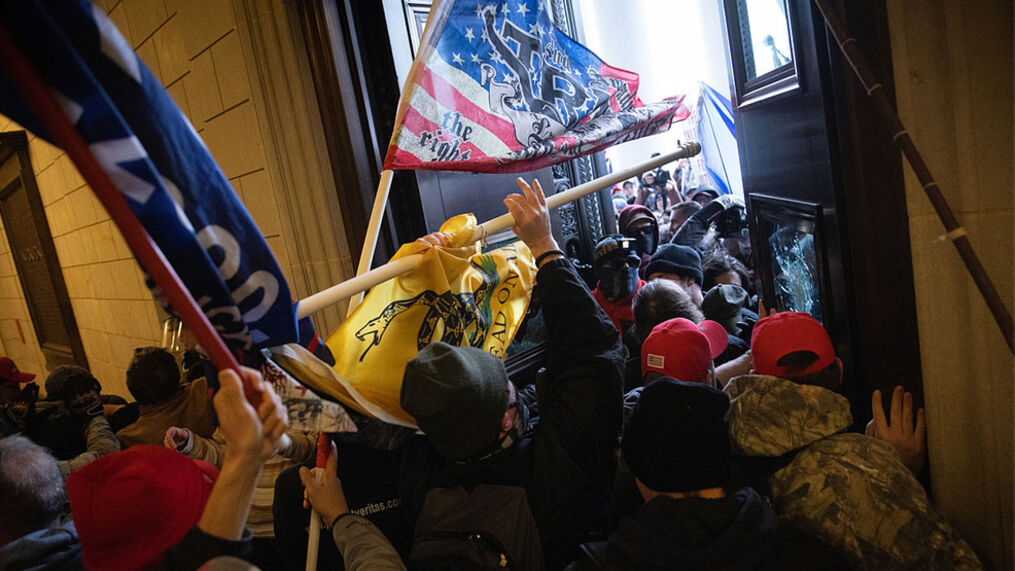Mike Allen and Jim VandeHei at Axios that the GOP really could break apart.
The GOP is getting torn apart by a spreading revolt against party leaders for failing to stand up for former President Trump and punish his critics.
Why it matters: Republican leaders suffered a nightmarish two months in Washington. Outside the nation’s capital, it’s even worse.
Much of the party’s base — including conservative talk radio, TV and social media — are spoiling to fight for Trump in exile.
On top of that, Trump himself is threatening to literally split the party in two with the creation of a new MAGA Party or Patriot Party, The Washington Post reported.
Heh.
The Arizona Republican Party voted yesterday to censure three faces of the Republican establishment — Cindy McCain, Gov. Doug Ducey and former Sen. Jeff Flake — and reelected state party chair Kelli Ward, a fierce Trumper.
The 10 House Republicans who voted to impeach Trump are being hit with swift punishment, including brewing primary challenges, censure votes and public scoldings, the N.Y. Times reports (subscription).
Some House Republicans, egged on by right-wing media, are pushing an uphill fight to oust Cheney from her third-ranking leadership post. In Wyoming, she faces a long-shot primary challenge.
Allen and VandeHei think this will be the reality for Republicans until at least 2024 or “Trump fully exits the scene.” Hmm. And the anti-Trump establishment is “too weak, timid and divided to prevail right now,” they say.
Trump wants to create a MAGA party and primary Republicans who were insufficiently loyal to him.
In recent weeks, Trump has entertained the idea of creating a third party, called the Patriot Party, and instructed his aides to prepare election challenges to lawmakers who crossed him in the final weeks in office, including Rep. Liz Cheney, R-Wyo., Georgia Gov. Brian Kemp, Sen. Lisa Murkowski, R-Alaska, and Rep. Tom Rice, R-S.C., according to people familiar with the plans.
Multiple people in Trump’s orbit, who spoke on the condition of anonymity to discuss private conversations, say Trump has told people that the third-party threat gives him leverage to prevent Republican senators from voting to convict him during the Senate impeachment trial. Trump advisers also say they plan to recruit opposing primary candidates and commission polling next week in districts of targeted lawmakers. Trump has more than $70 million in campaign cash banked to fund his political efforts, these people say.
He may lose interest in this project once the impeachment effort runs its course. However, it’s also possible other party extremists will get Trump’s endorsement to pick up the MAGA ball and run with it into 2022.
In the New York Times, Jeremy Peters writes that because of Trump there are three kinds of Republicans. First, there are the Never Trumpers who have taken a clear stand against Trump since 2016, if not earlier. Then there are the “New RINOs.” Basically, these are establishment Republican office holders who have championed hard-right policies for years but who would not cross the line of supporting Trump’s scheme to overturn the election. These also include the ten Republican House members who voted for the new article of impeachment. And finally, there are Trump Republicans, whose loyalty to Trump overrides their loyalty to the party.
The fight over the future of the Republican Party, Peters writes, is between the New RINOs and Trump Republicans. And this could get dicey. It seems to me that at the moment, momentum is with the Trump Republicans. The New RINOs are playing defense. The question is, will that change as time goes on? Especially if Trump and family find themselves facing financial and legal ruin, which is very possible, at least some of his followers may realize he’s not a demi-god after all. We’ll see.
In the meantime, I am more interested in how this crackup among Republicans might impact the Senate. The editorial board of the Financial Times:
The question is not whether the Republican party can turn over a new leaf; that is off the cards in the near future. It is how Mr Biden’s Democrats should handle an opposition that is vowing to obstruct most of his agenda. Mr Biden faces a dilemma. In his inaugural address on Wednesday, he promised to foster a climate of unity and healing. Yet he also vowed to “reject a culture in which the facts themselves are manipulated, even manufactured”. Since much of the Republican party remains yoked to conspiracy theory — including the ultimate lie that Mr Biden stole the 2020 election — it is hard to see how he can meet them halfway.
One, he can’t. They have to meet him at least halfway, if not three-fourths of the way, or no deal.
Mr Biden should still keep his bipartisan hand outstretched. Should it be spurned, he must level with the US people. Healing is only possible when all parties agree to the basic rules of democracy.
Communication, President Biden. When Republicans are blocking your agenda, go to the people and tell them so. Say “This is what I’m trying to do for you, but Republicans are blocking it.” Get that message out any way you can.
Regarding impeachment, IMO the Republican establishment would be better off in the long run if they convicted Trump and then barred him from holding elected office ever again. And by in the long run I mean four, six, eight or more years from now. They’d probably forfeit any chance to take back Congress in the 2022 midterms, but they might have a shot by 2024. But if the Trump Republicans maintain the upper hand, and keep it, I think it’s possible the GOP could split in two.
A conservative Republican named Krista Kafer writes for the Denver Post, “The question for me is whether I should stay or whether I should leave the Republican Party. I’ve decided that if the Trump influence fades away over the next year, I will stay to help rebuild; otherwise, I will have to find another political home.”
So there we are. The Republican Party is in big trouble. This could play out many different ways.











